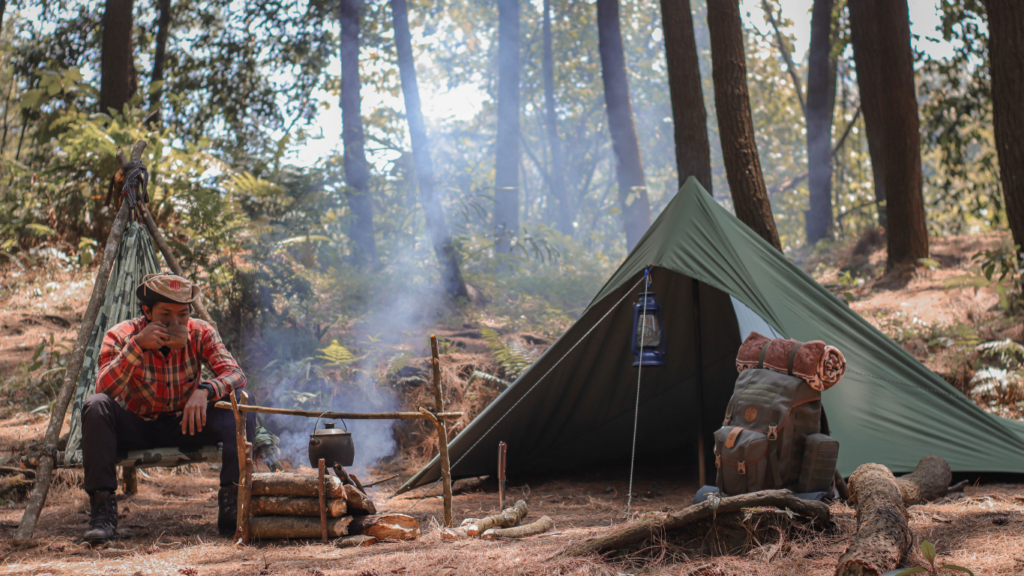Understanding Mental Preparedness
Mental preparedness involves developing a mindset that can withstand the pressure of survival situations. It’s not about ignoring fear but managing it effectively to stay rational and focused. This skill requires regular practice and self-awareness. By understanding mental preparedness, individuals can better handle emergencies and improve their chances of survival.
Key Components
Several elements contribute to mental preparedness:
- Self-Awareness
Recognizing one’s emotions and reactions helps in managing stress. For example, understanding when anxiety begins to take over allows for quicker intervention through breathing exercises or other calming techniques. - Adaptability
Being flexible and open to change is crucial. Surviving unexpected situations often requires adapting plans and strategies on the fly. This dynamic thinking helps in responding effectively rather than freezing in panic. - Problem-Solving Skills
In high-stress situations, clear-headed problem-solving becomes essential. Practicing scenario planning and critical thinking cultivates the ability to assess options and make quick decisions. - Stress Management Techniques
Techniques such as deep breathing, mindfulness, and meditation can significantly reduce stress levels. Regular practice of these techniques trains the mind to remain calm and focused during crises. - Positive Visualization
Visualizing successful outcomes increases confidence. It’s a mental rehearsal that prepares the mind for actual events, making responses more instinctual and less reactive.
Behavioral Training
Practicing certain behaviors consistently builds mental fortitude:
- Routine Exposure: Exposing oneself to stressors regularly, in controlled environments, helps in building resilience.
- Simulation Drills: Participating in survival exercises mimics real-life situations, enhancing mental preparedness.
- Physical Fitness: Maintaining good physical health directly affects mental well-being. Regular exercise reduces stress hormones and boosts mental clarity.
Cognitive Techniques
Using cognitive methods sharpens the mind for survival:
- Positive Self-Talk: Encouraging oneself through affirmations strengthens mental toughness.
- Focus Exercises: Activities that require concentration, like puzzles or meditation, improve focus and attention.
- Memory Training: Strengthening memory through regular exercises aids in recalling crucial survival information under stress.
Understanding and developing these aspects of mental preparedness equips individuals to face survival situations with greater confidence and competence.
The Importance of Staying Calm

Staying calm is crucial in survival situations because it directly affects decision-making and stress levels.
Reducing Stress and Anxiety
Calm individuals can manage stress and anxiety better in survival scenarios. When adrenaline kicks in and panic sets in, it’s harder to think straight. Techniques like deep breathing and meditation help regulate the body’s stress response. Engaging in positive self-talk also mitigates feelings of overwhelm and boosts confidence.
Making Rational Decisions
Calmness enhances the ability to make rational decisions during crises. Fear clouds judgment and leads to impulsive actions. Staying composed allows for logical thinking and a thorough assessment of the situation. Prioritizing tasks methodically and considering potential outcomes leads to better survival chances.
Techniques to Enhance Mental Preparedness
Enhancing mental preparedness in survival situations involves mastering several techniques to stay calm and focused. These techniques can help optimize mental clarity and improve decision-making capabilities.
Breathing Exercises
Breathing exercises stabilize the mind during high-stress situations. Controlled breathing techniques, such as deep breathing and box breathing, can reduce anxiety. For example, in deep breathing, inhale deeply through the nose, hold the breath for a few seconds, and exhale slowly through the mouth. This method helps regulate the heart rate and promotes calmness. Box breathing involves inhaling for four seconds, holding the breath for four seconds, exhaling for four seconds, and then pausing for another four seconds before repeating. This structured sequence promotes mental clarity.
Mindfulness and Meditation
Mindfulness and meditation enhance focus and awareness. Practicing mindfulness involves paying close attention to present-moment experiences without judgment. Methods include observing thoughts and sensations to stay grounded. Meditation, on the other hand, involves setting aside time to focus the mind on a single point, such as the breath or a mantra. Daily practice sessions, even for short periods, can significantly enhance emotional regulation and mental resilience.
Visualization Techniques
Visualization techniques leverage the power of imagination to prepare for challenging scenarios. By picturing successful outcomes, individuals can build confidence and mentally rehearse responses to potential threats. For instance, visualize navigating through a dense forest or successfully starting a fire under adverse conditions. This process creates mental scripts that can guide actions when faced with actual survival situations.
Building Mental Resilience
Mental resilience is crucial for staying calm and focused in survival situations. Strengthening mental resilience involves several key strategies.
Developing a Positive Mindset
Cultivating a positive mindset impacts your ability to handle stress. Focus on what you can control, and let go of what you can’t. For example, instead of worrying about the weather, prepare for it. Practice gratitude by acknowledging what you’re thankful for, even in difficult times. Positive self-talk enhances your overall mental health. Replace negative thoughts with constructive ones. For example, instead of thinking, “I can’t handle this,” tell yourself, “I’ve faced challenges before and succeeded.”
Establishing a Routine
Establishing a routine brings structure to chaotic situations. Create daily habits to stabilize your environment. Stick to set times for meals, sleep, and physical activity. For instance, taking 10 minutes to meditate each morning can boost your mental focus for the rest of the day. Clear routines reduce decision fatigue, freeing mental energy for more critical decisions.
Practicing Simulations and Drills
Simulations and drills help prepare your mind for real-life situations. Regular practice boosts your confidence and reaction capabilities. Set up practical scenarios that mimic potential crises. For instance, create a fire drill at home or practice basic first aid in a controlled setting. These exercises help you anticipate possible challenges and refine your problem-solving skills. Familiarity with emergency procedures reduces panic, making your responses more effective.
Staying Focused in High-Stress Situations
Staying focused in high-stress situations is crucial for survival. Effective techniques help clear the mind and improve decision-making.
Prioritizing Tasks
I identify and rank critical tasks in order of urgency to stay on track. Time management ensures I address immediate needs first, like securing shelter or finding water. For instance, constructing a makeshift shelter takes precedence over gathering food if weather conditions are harsh. This method also simplifies complex challenges by breaking them into manageable steps.
Staying Present
I concentrate on the present moment to reduce anxiety about potential threats. Mindfulness techniques, such as deep breathing and sensory awareness (like noting sights and sounds), help ground my attention. If I find myself worrying about the future, I redirect focus to immediate surroundings or tasks. Staying present optimizes mental clarity and helps in executing necessary tasks efficiently.
Taking Breaks
Periods of rest replenish mental energy, enhancing focus and performance. Short breaks, even in high-stress environments, are crucial for avoiding burnout. Activities like stretching, brief walks, or consuming small portions of food or water during breaks can significantly improve my state of mind. Regular intervals for relaxation sustain my cognitive and physical abilities, enabling continuous effective decision-making.





